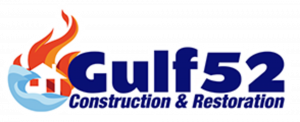Fire-damaged metal requires immediate attention to remove corrosive residues and prevent rusting or structural degradation”
HAMMOND, LA, UNITED STATES, November 19, 2024 /EINPresswire.com/ -- Fire damage extends beyond visible destruction, often leaving behind corrosive residues that can compromise metal surfaces. Heat, smoke, and acidic residues from combustion combine to create conditions that accelerate rusting and corrosion on exposed metal. Restoring metal surfaces after a fire requires a thorough understanding of these effects and the appropriate steps to preserve their appearance and functionality.— Earl Carr, Jr.
Earl Carr, Jr., president of Gulf 52 in Hammond, Louisiana, highlights the importance of addressing fire-damaged metals promptly to prevent further deterioration. Metals impacted by fire require specialized cleaning and treatment processes to remove residues, halt corrosion, and restore structural integrity.
Effects of Fire and Smoke on Metals
Fire and smoke damage metal in multiple ways, each requiring attention during the restoration process:
Heat Damage: High temperatures can cause warping, discoloration, and structural weakening in metal surfaces. Metals such as aluminum and steel may lose their strength and flexibility, making them more susceptible to failure.
Smoke Residues: Smoke contains a mixture of particles and gases, including acidic compounds that settle on metal surfaces. These residues promote oxidation and create an environment conducive to rust and corrosion.
Acidic Residues: Fires involving plastics, insulation, or other synthetic materials release chlorides and sulfates that deposit onto metal surfaces. These residues are particularly corrosive and can accelerate rusting if not promptly removed.
The Restoration Process
Restoring metal surfaces after a fire involves a series of steps designed to address damage and prevent further corrosion:
Assessment and Documentation: A thorough inspection of the affected area is the first step in the restoration process. This includes identifying the types of metals involved, the extent of heat exposure, and the severity of smoke and residue deposits. Proper documentation helps guide the restoration approach and provides necessary information for insurance purposes.
Initial Cleaning: Removing surface debris, soot, and loose residues is essential before further treatment. This is often done using dry cleaning methods such as vacuuming or soft brushing to avoid spreading residues. Careful handling is critical to prevent additional damage during this phase.
Neutralizing Acidic Residues: Acidic residues must be neutralized to prevent ongoing corrosion. Specialized cleaning agents formulated for fire-damaged metal are applied to break down and neutralize these compounds. The choice of cleaning agent depends on the type of metal and the nature of the residues.
Rust and Corrosion Removal: In cases where rust or corrosion has already formed, mechanical or chemical methods may be required to remove it. Sanding, wire brushing, or using chemical rust removers can restore the surface to its original condition.
Surface Polishing and Repair: After cleaning and rust removal, polishing the metal helps restore its appearance and address minor surface imperfections. For metals that have been significantly damaged or warped, additional repairs such as welding or reshaping may be necessary to restore functionality.
Protective Coatings: Applying a protective coating is the final step in preserving the restored surface. Coatings such as rust inhibitors, corrosion-resistant paints, or sealants create a barrier that shields the metal from future exposure to moisture and corrosive elements.
Importance of Timely Restoration
Delays in addressing fire-damaged metal can exacerbate the problem. Acidic residues begin corroding metal surfaces almost immediately after settling, and prolonged exposure to moisture accelerates the process. Timely restoration efforts not only prevent further damage but also reduce the likelihood of needing costly replacements.
Carr emphasizes the critical role of prompt action in protecting metal surfaces from permanent damage. "Fire-damaged metal requires immediate attention to remove corrosive residues and prevent rusting or structural degradation," Carr states.
Challenges in Restoring Fire-Damaged Metals
Restoring fire-damaged metals presents unique challenges that must be carefully managed:
Identifying Hidden Damage: Heat can cause microscopic changes in metal that are not immediately visible but can compromise strength over time. Thorough inspections are necessary to identify these issues.
Compatibility of Cleaning Agents: Using inappropriate cleaning agents can worsen damage or react with residues, creating additional problems. Selecting the correct product for each type of metal is crucial.
Environmental Considerations: The restoration process must comply with environmental regulations governing the disposal of soot, residues, and cleaning chemicals.
Preventative Measures for the Future
After restoration, implementing preventative measures helps protect metal surfaces from future damage. Regular maintenance, inspections, and the application of protective coatings extend the lifespan of metal components and ensure they remain functional in the long term. Additionally, improving fire safety measures within the affected area can reduce the risk of future incidents.
Conclusion
Fire-damaged metal surfaces require a specialized approach to cleaning, corrosion removal, and preservation. The effects of heat, smoke, and acidic residues can compromise both the appearance and functionality of metals, making timely restoration essential. Through a structured process that includes assessment, cleaning, and protection, metal surfaces can be effectively restored, ensuring durability and safety for years to come.
For more information on metal restoration after a fire, contact Gulf 52 in Hammond, Louisiana, for expert guidance and services tailored to the unique challenges of fire damage.
Morgan Thomas
Rhino Digital, LLC
+1 504-875-5036
email us here
Visit us on social media:
Facebook
Legal Disclaimer:
EIN Presswire provides this news content "as is" without warranty of any kind. We do not accept any responsibility or liability for the accuracy, content, images, videos, licenses, completeness, legality, or reliability of the information contained in this article. If you have any complaints or copyright issues related to this article, kindly contact the author above.



